Tens of thousands of naked Hindu ascetics and millions of pilgrims plunged into freezing waters Tuesday at the confluence of three sacred rivers during the Maha Kumbh festival, the world’s largest religious gathering.
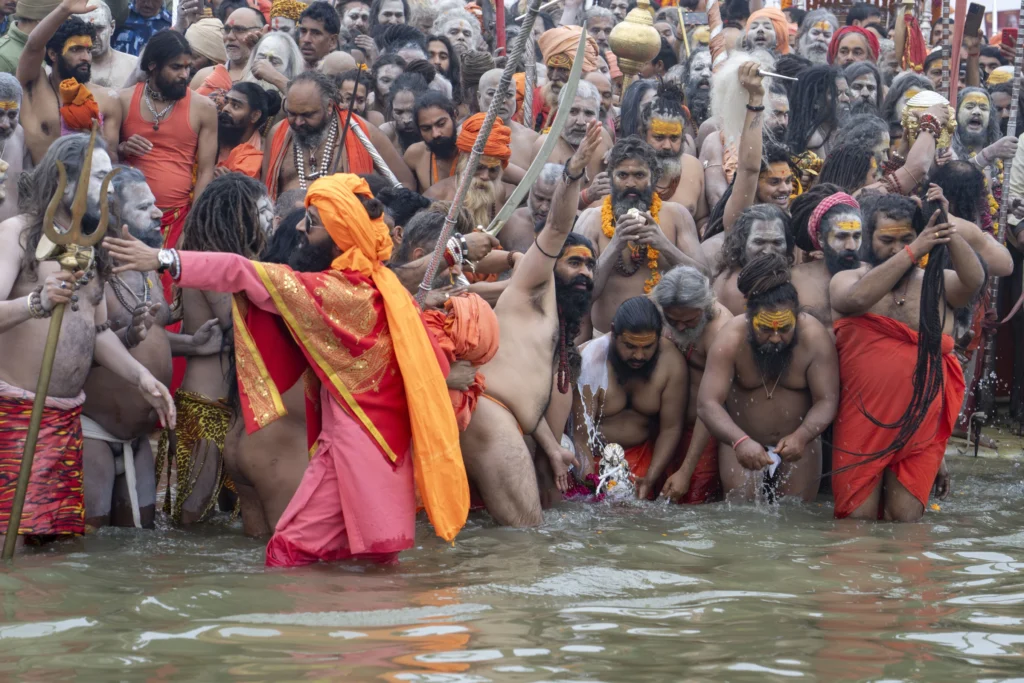
At sunrise, ash-smeared Hindu holy men wielding tridents, swords, and drums marched and rode chariots to the meeting point of the Ganges, Yamuna, and mythical Saraswati rivers. Crowns of marigolds adorned their matted dreadlocks as they chanted praises to Lord Shiva, leading processions with singing, drumming, and blowing horns. Millions of pilgrims followed into the waters, seeking spiritual cleansing.
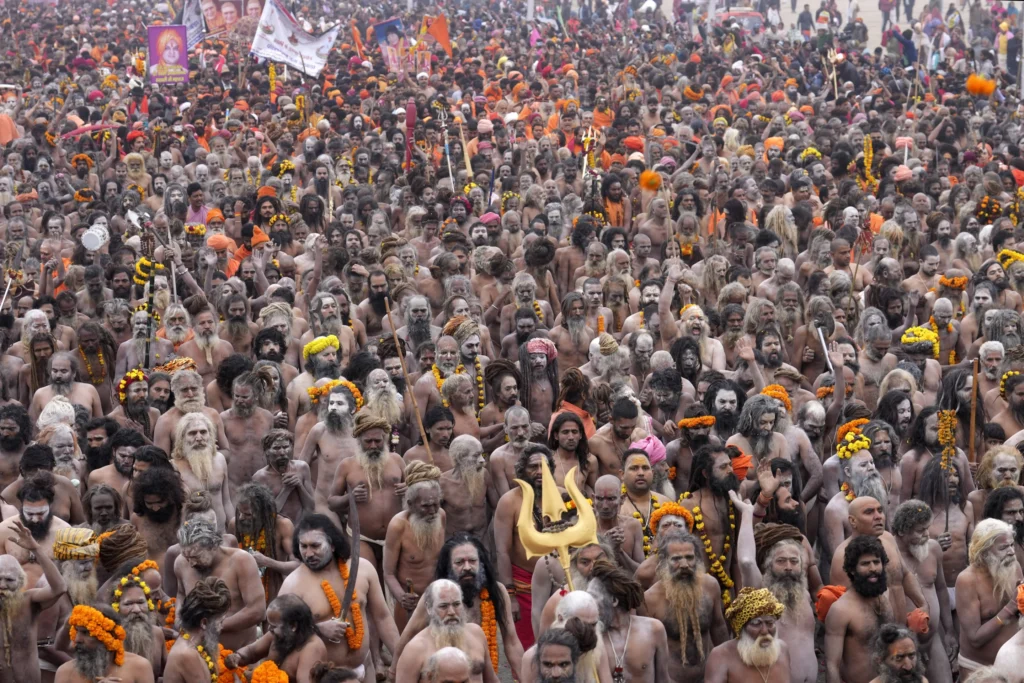
The Maha Kumbh festival, held every 12 years, began Monday. Officials reported that over 15 million pilgrims bathed in the sacred rivers on the first day alone. The event is expected to draw more than 400 million participants over the next six weeks, many engaging in elaborate rituals.
Hindus believe that bathing at the river confluence absolves sins and frees them from the cycle of rebirth. The festival traces its roots to Hindu mythology, where the god Vishnu wrested a golden pitcher of immortality from demons. According to tradition, drops of nectar fell on Prayagraj, Nasik, Ujjain, and Haridwar—rotating host cities of the Kumbh festival every three years.
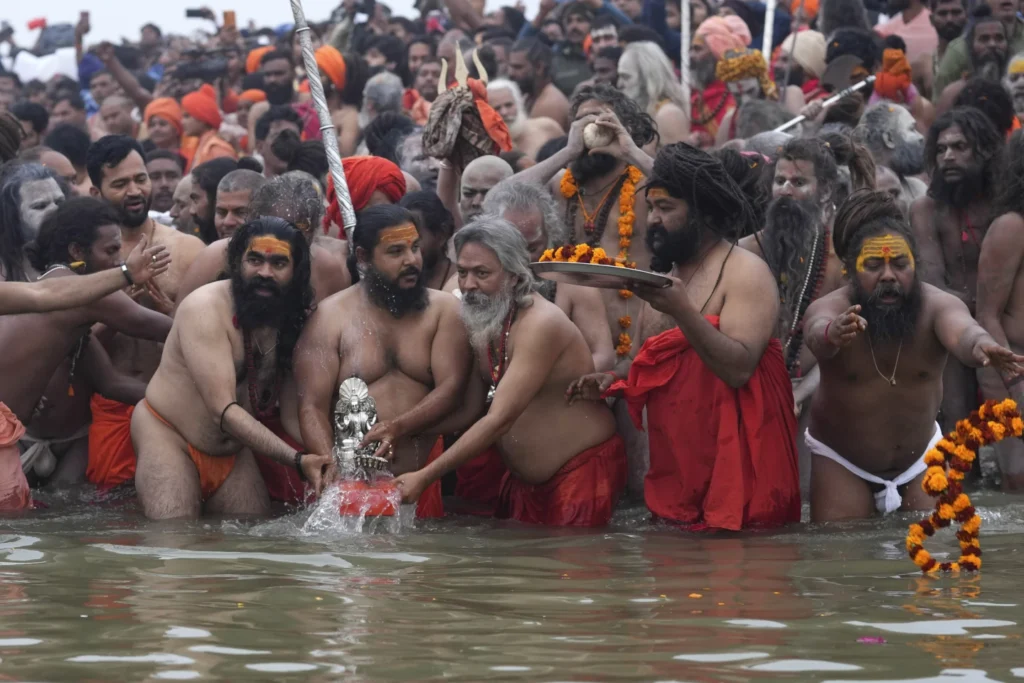
This year’s Maha Kumbh is the largest iteration, with preparations that include a sprawling tent city along the riverbanks. The Indian government has allocated over $765 million for infrastructure, aiming to accommodate pilgrims and impress global visitors.
Among the attendees was Venkatesh Ramaling, a tech specialist from Pune, who expressed awe at the unwavering faith of others. “After taking the holy dip, I feel inspired and full of positivity,” he said.
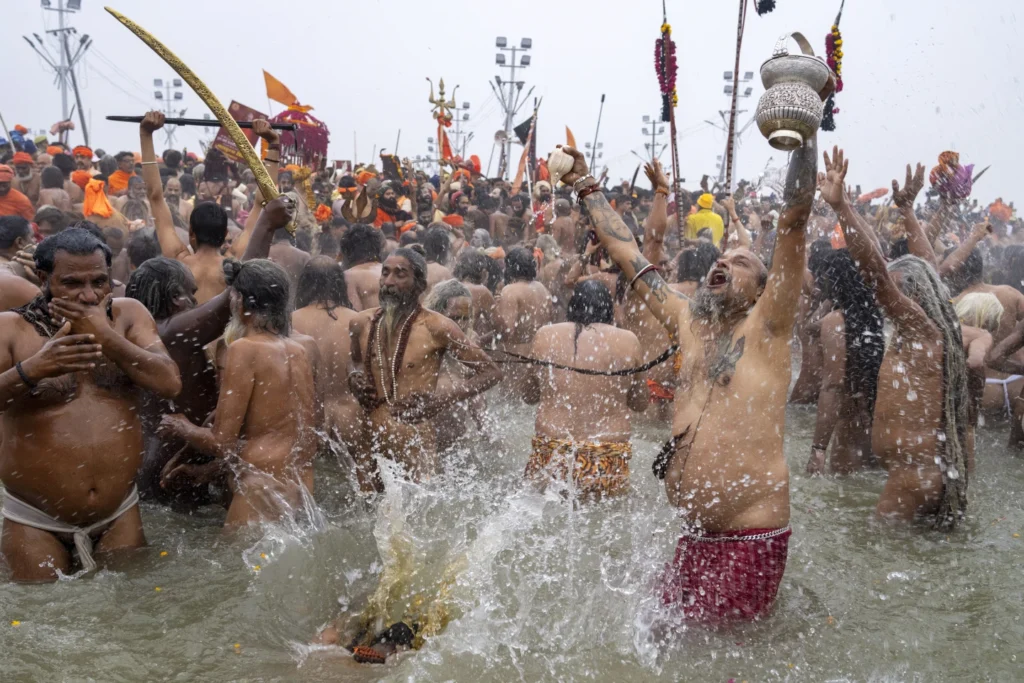
The temporary city boasts 3,000 kitchens, 150,000 toilets, and robust security measures. Over 50,000 personnel have been deployed, along with 2,700 AI-powered cameras monitoring crowds to prevent stampedes. Past festivals have seen tragedies, making crowd management a priority.
“Crowd density and movement are tracked in real-time from control rooms,” said Rajnish Diwedi, a senior police official. “Automated systems are in place to ensure safety.”
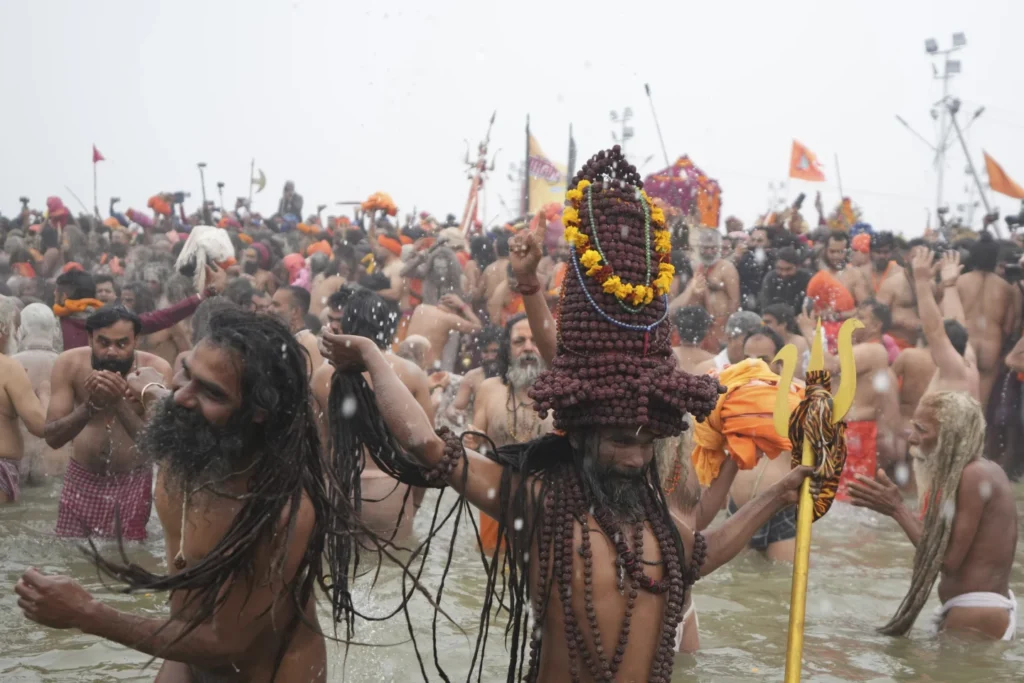
Groups of ascetics, or Naga Sadhus, have established camps for religious discourses and blessings. These holy men, historically known as mercenary warriors, are revered for their devotion to Hindu deity Shiva.
“This is a sacred place for salvation,” said Sri Digambar Ishwargiri, a Naga Sadhu from Junagadh. Sitting beside a ceremonial fire, he described himself as a “soldier of the Hindu religion” who safeguards the faith.
Bathing rituals occur daily, with special processions on auspicious dates where ascetics charge toward the rivers at dawn. Many pilgrims remain for the festival’s duration, observing strict practices, donating alms, and participating in sunrise bathing.


